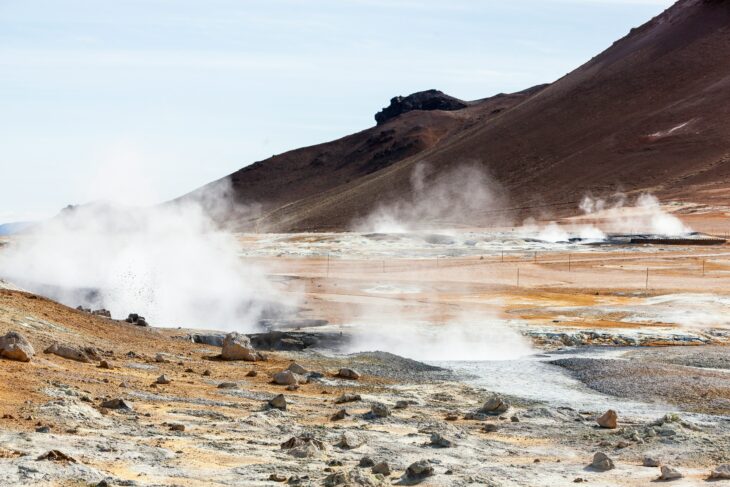For hundreds of years, humans have drilled for oil and used it as a source of energy to heat our houses and light our streets. Now, scientists are looking to transition to more renewable energy sources. One such source is geothermal energy, which uses heat from the Earth to make steam that turns turbines and generates electricity. As we transition to renewables, researchers want to take advantage of technology developed by the oil industry.
Recently, scientists from the USA adapted an oil industry technique called play fairway analysis, or PFA, to advance geothermal energy. PFA is a mapping technique that helps researchers identify regions with potential energy resources, called fairways, and locate areas within fairways to further explore, called plays. PFA was developed to reduce the cost and risk of discovering new oil reservoirs, including those hidden from the surface, like in the Gulf of Mexico.
To conduct PFA, researchers begin by selecting a large region with geologic properties that have the potential for oil. Oil reservoirs have 3 key properties: rock type, permeability, and seal. Potential oil reservoirs must include specific rock types that contain enough organic matter to create oil, like shales. The rock must be permeable enough to allow the oil to flow in and become concentrated. Finally, there must be an impermeable rock layer on top to seal the oil in the reservoir.
Scientists use geologic data to produce maps of these 3 properties. The data can be sparse, so researchers assign confidence values to each data type. The result is 3 maps of the key properties along with 3 maps of confidence values. Geologists combine these maps mathematically to show the most probable areas of striking oil.
These researchers aimed to adapt PFA to identify potential geothermal energy sources. They explained that this process is currently inefficient because scientists have to make educated guesses about where to place new wells based on surface features, like geysers and tectonic boundaries. This approach misses potential geothermal energy sources without surface features.
This team suggested that PFA could be adapted to geothermal energy sources because of their parallels to oil reservoirs. Geothermal energy sources are also composed of specific rock types that provide a heat source. The rock also needs to be permeable so the heated water can flow to an outlet and be used to generate electricity. Finally, the heated water needs to be contained with a seal.
To develop geothermal PFA, the researchers chose the Snake River Plain in Idaho, which is a 150,000 km2 (about 90,000 mi2) region to the west of Yellowstone National Park. They chose this area because volcanic activity provides a continuous heat source. The researchers compiled data for each of the 3 key properties of this area–its heat source, permeability, and seal–from various public and private sources.
For example, to make a heat source map of the Snake River Plain, the researchers compiled data like groundwater temperatures and regional heat flow measurements. As in oil PFA, the researchers assigned confidence values to each data type and used the results to create a heat source map using a mapping software called ArcGIS.
After mapping all 3 of the properties needed for geothermal energy, the researchers combined the individual heat source, permeability, and seal maps into a composite fairway map. Using the fairway map, the researchers identified plays in 2 regions of the Snake River Plain to explore further. Then they refined the plays using the same process used to develop the composite map, but at a finer scale. Ultimately, the researchers identified 2 fairways with 8 plays that could be sources of geothermal energy.
The team concluded that play fairway analysis can be altered to help find geothermal energy sources. According to the researchers, the “methods and tools are transferable to other regions with different geothermal resources and may be used throughout the geothermal industry.” They suggested this strategy could help lower the cost and risk of developing other new clean energy sources as well.


